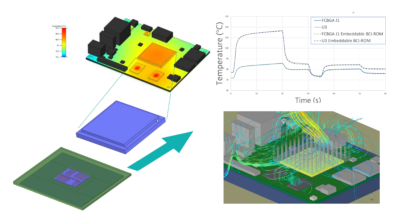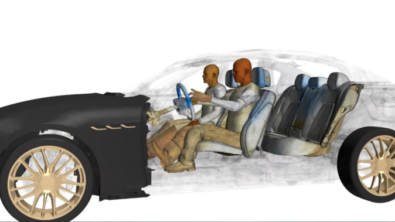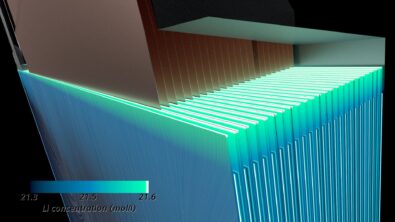Electrothermal circuit simulation enabled by VHDL-AMS thermal netlists
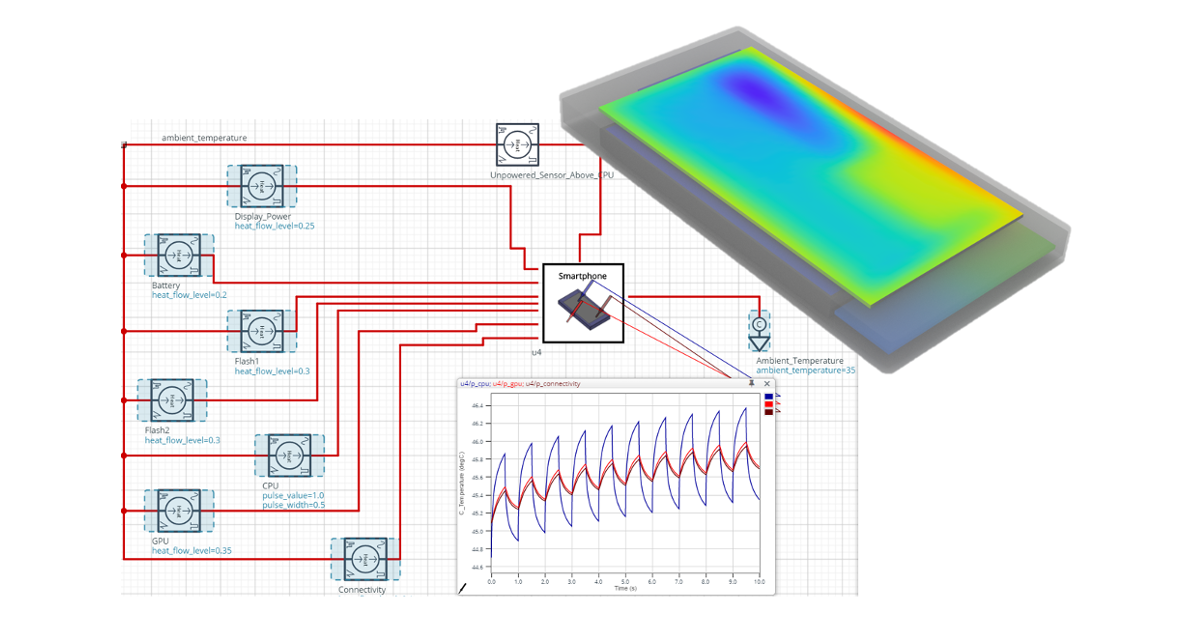
Using circuit simulation software without incorporating electrothermal analysis to account for temperature effects and heat dissipation is a pretty big oversimplification impacting accuracy for many applications. Incorporating simple thermal resistance models and R-C network models are approaches that have been used. These typically involve either simplified methods or extensive calculation for more detailed reduced order model creation.
There is now a more robust and straight forward way to create thermal data for electrothermal analysis in the form of thermal netlists in VHDL-AMS format, generated directly from 3D electronics thermal analysis using capabilities in the Simcenter Flotherm 2020.1 software release. You can also try out electrothermal analysis in a link below utilizing VHDL-AMS thermal netlists generated by Simcenter Flotherm. You can also find out about BCI-ROM Boundary Condition Independent Reduced Order Models for circuit simulation in this related blog.
How is a thermal netlist generated for electrothermal analysis?
A thermal netlist for use in a circuit simulation tool, generated from a 3D thermal analysis model, is much more than a typical simple thermal resistance model or an R-C network model representing a single heat flow path. A thermal netlist, when generated from a 3D thermal conduction model, is a network representing the relationship of multiple powered components, or power sources generating heat within a model, which is then mapped to simulation outputs for temperature at locations represented by nodes. When applied in a circuit simulator with electrical netlists and control applied, it can be used to model transient thermal response to variations in power, to accurately predict temperature orders of magnitude faster than using full 3D CFD.
As a quick visual recap on the concept of extracting a thermal netlist and methods used, I refer you to an existing video below from the past Simcenter Flotherm 2019.1 release where thermal netlists first became possible to generate in the spice format (*.sp file) for use by electro-thermal circuit simulation tools supporting the spice format and to a set level of error specified by the user.
What is the different between a thermal netlist and a BCI-ROM?
A thermal netlist = reduced order model data that is valid for a set range of boundary conditions.
A BCI-ROM = Boundary Condition Independent Reduced Order Model valid for any thermal environment.
You can see a video about these as a general introduction here BCI-ROMs – Faster transient electronics thermal simulation. They are now available also in VHDL-AMS format.
Thermal netlists use in circuit simulation tools for electro-thermal modeling are the subject of this blog. You can find out about BCI-ROMs for circuit simulation in this related blog “The future of thermal design – earlier electro-thermal circuit simulation“. There are also further resources on different types of BCI-ROM format for various other uses such as system simulation or 3D CFD simulation at the base of this blog.
Simcenter Flotherm 2020.1 enables VHDL-AMS based circuit simulation tools
A new feature in Simcenter Flotherm 2020.1 enables you to generate and export a thermal netlist in VHDL-AMS (IEEE Standard 1076.1) format from a 3D thermal conduction model with any number of heat sources. This VHDL thermal netlist is guaranteed to produce transient thermal results for any power profile that are within a user defined tolerance of the full Simcenter Flotherm model’s results, but much, much faster (up to 100,000x faster). VHDL-AMS is supported in many circuit simulation tools, such as PartQuest Explore, Xpedition AMS, and Eldo from Siemens EDA.
Try electrothermal analysis in PartQuest Explore enabled by Simcenter Flotherm
There’s an online example you can launch by clicking on the image below that you can play with right now! . A Simcenter Flotherm 2020.1 model of a generic smartphone with several powered components has been transformed into a VHDL-AMS thermal netlist, imported into PartQuest Explore, and connected to a simple circuit. You can try powering the components with various power levels and functions.
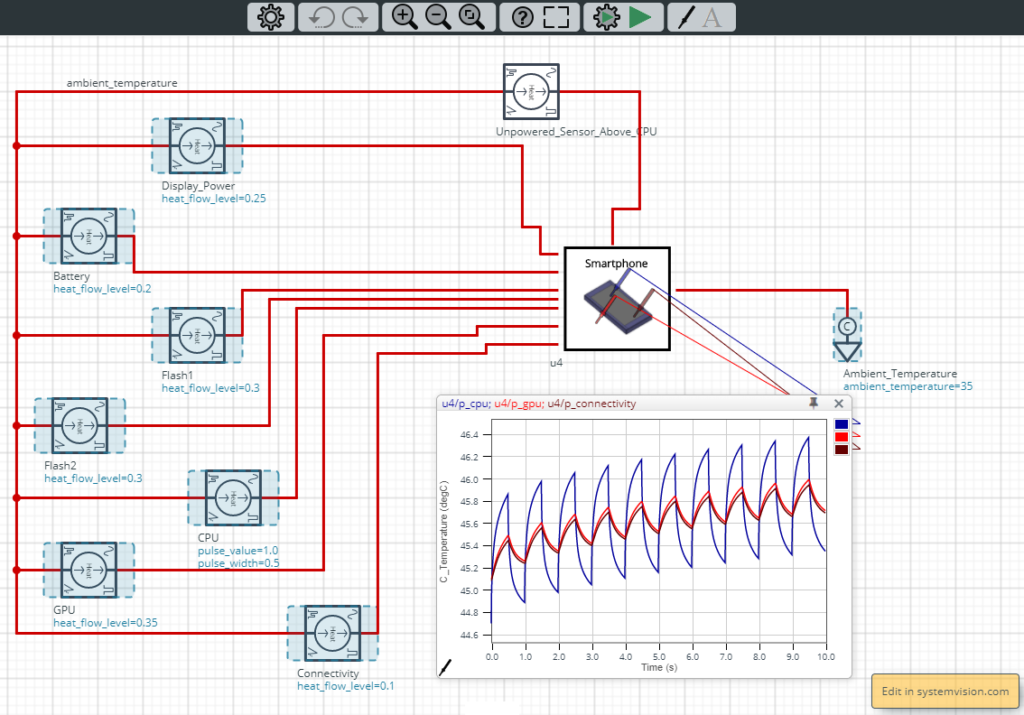
(click here to launch it in a separate browser if the image is not displayed)
Feel free to modify the various parameters (double-click the blue components to see what you can change) and what is then simulated (green arrow) to get the updated transient temperatures. Don’t worry, you can’t mess the original model up for others, so feel free to explore in any way.
Thermal and electrical engineers collaborate on electrothermal analysis
As a thermal analyst, mechanical or design engineer – you can now support your electrical engineering colleagues by transforming your 3D Simcenter Flotherm thermal models into a VHDL-AMS thermal netlist format and thus better enable fast, accurate, electrothermal circuit simulations to be added to your organization’s design process.
For an EE perspective, view the blog my colleague Mike Donnelly has assembled on a more detailed digital smartphone example for electrothermal modeling inPartQuest Explore. He has also published a separate analog example featuring an LED lamp control circuit you can view here.
Thermal engineers using Simcenter Flotherm, can also themselves take advantage of these VHDL-AMS thermal netlists to tackle transient thermal issues alongside other available reduced order modeling techniques. Many studies take far too long to analyze in a 3D CFD analysis, such as rapid, complex power variations, or exploring dynamic power control strategies. PartQuest Explore is a great platform for doing these types of studies, and easily adopted by thermal engineers in a few minutes, to supplement their 3D CFD primary tasks, and there are no costs to try it out.
More resources & reduced order modeling information
___________________________
Please view the Simcenter Flotherm 2020.1 release overview blog to learn about features at that release including VHDL-AMS format thermal netlists and other topics on reduced order modeling such as export of BCI-ROMs in FMU format for use by system modeling tools, plus other enhancements in PCB data management.
Thermal netlist export in Spice Format
[TECH TIP] Thermal netlist export in .sp format workflow for users
Resources on electro-thermal circuit simulation use of BCI-ROM technology
Learn how ROHM uses Simcenter Flotherm BCI-ROM technology
View this on-demand recorded presentation:
Accelerate electronic systems design with thermally aware electrical simulation
Discover insights from Ippei Yasutake, Group Assistant Manager of Solutions Engineering at ROHM Co. Ltd, on the advantages of BCI-ROM technology to enable Rohm customers to reduce costly re-spins and increase productivity through fast, accurate electro-thermal circuit simulation of their designs.
Questions answered on using BCI-ROMs in a circuit simulation
If you are a circuit simulation user, please see the 2023 Linkedin Live event recording: Beat the heat: New technology to solve electronic design thermal challenges
and the related blog that answers several questions raised during that event: Eight questions on BCI-ROM answered
BCI-ROM technology for multiple thermal and electrothermal simulation purposes
View Simcenter Flotherm BCI-ROM factsheet – download
This details the current formats supporting matrices format (standalone solution) , FMU format for system simulation tools (like Simcenter Flomaster and Simcenter Amesim), VHDL-AMS format for circuit simulation tool use, and finally Embeddable BCI-ROMs (reduced order 3D accurate thermal models of IC packages for 3D CFD simulation). Please note that Simcenter Flotherm XT software also has this BCI-ROM generation capability and so does Simcenter FLOEFD software (leveraging the BCI-ROM and Package Creator Module). (Note: only Simcenter Flotherm supports Embeddable BCI-ROM creation however at this time.)
For a recap on reduced order modeling capabilities such as boundary condition independent reduced order models (BCI-ROMs) generated directly in Simcenter Flotherm or exported to support circuit simulation tools via spice format files, please review these 2 short videos on Youtube below:
